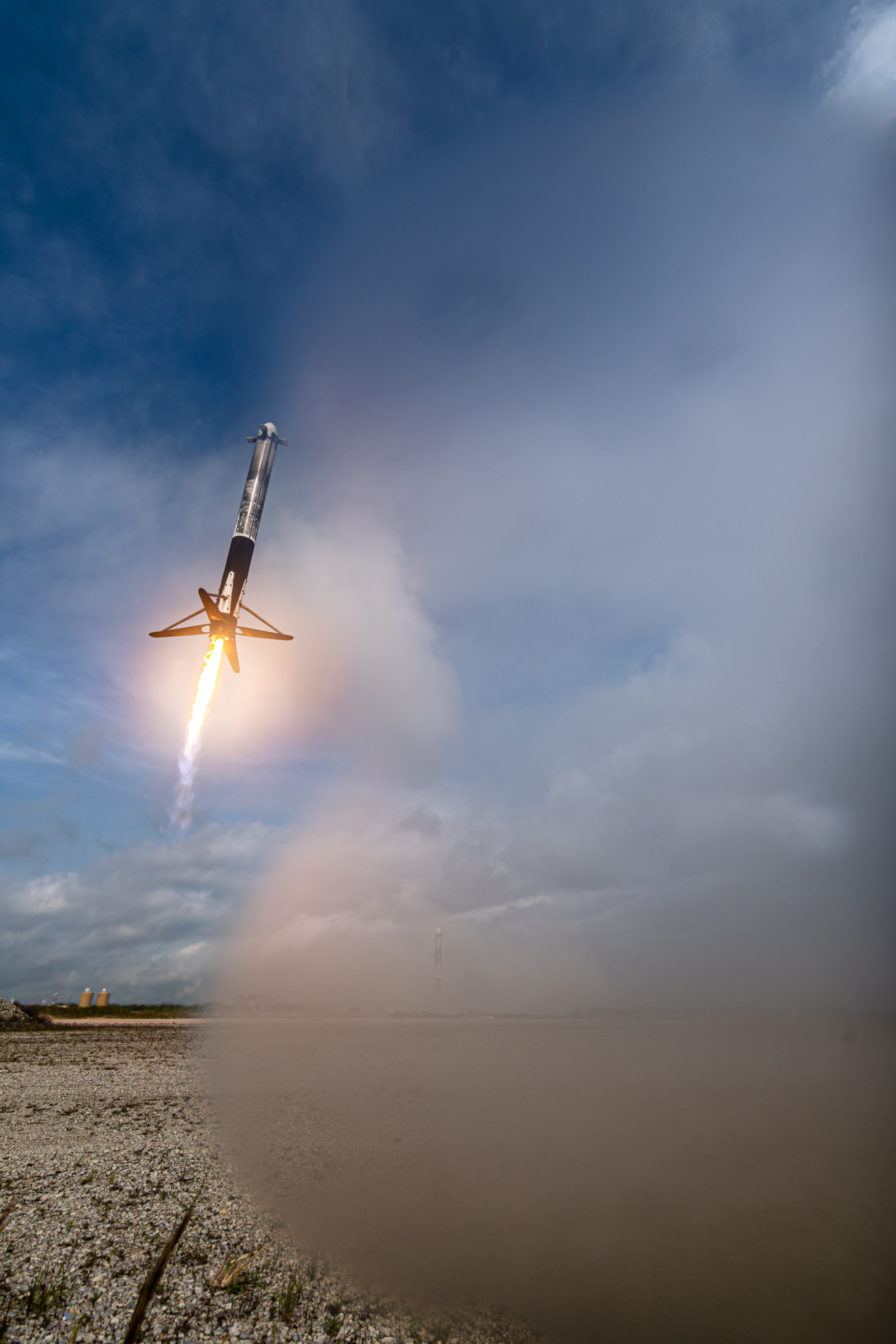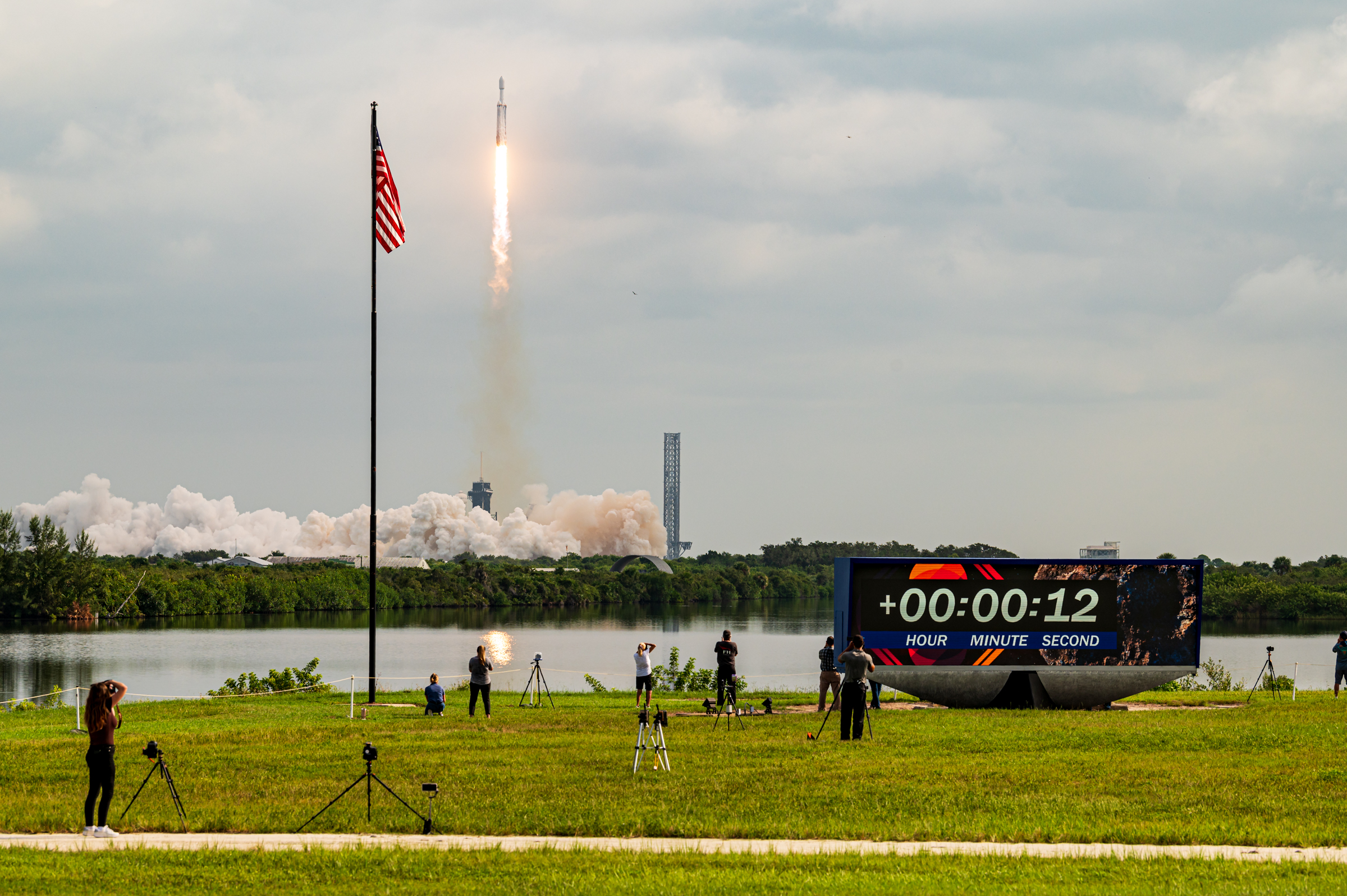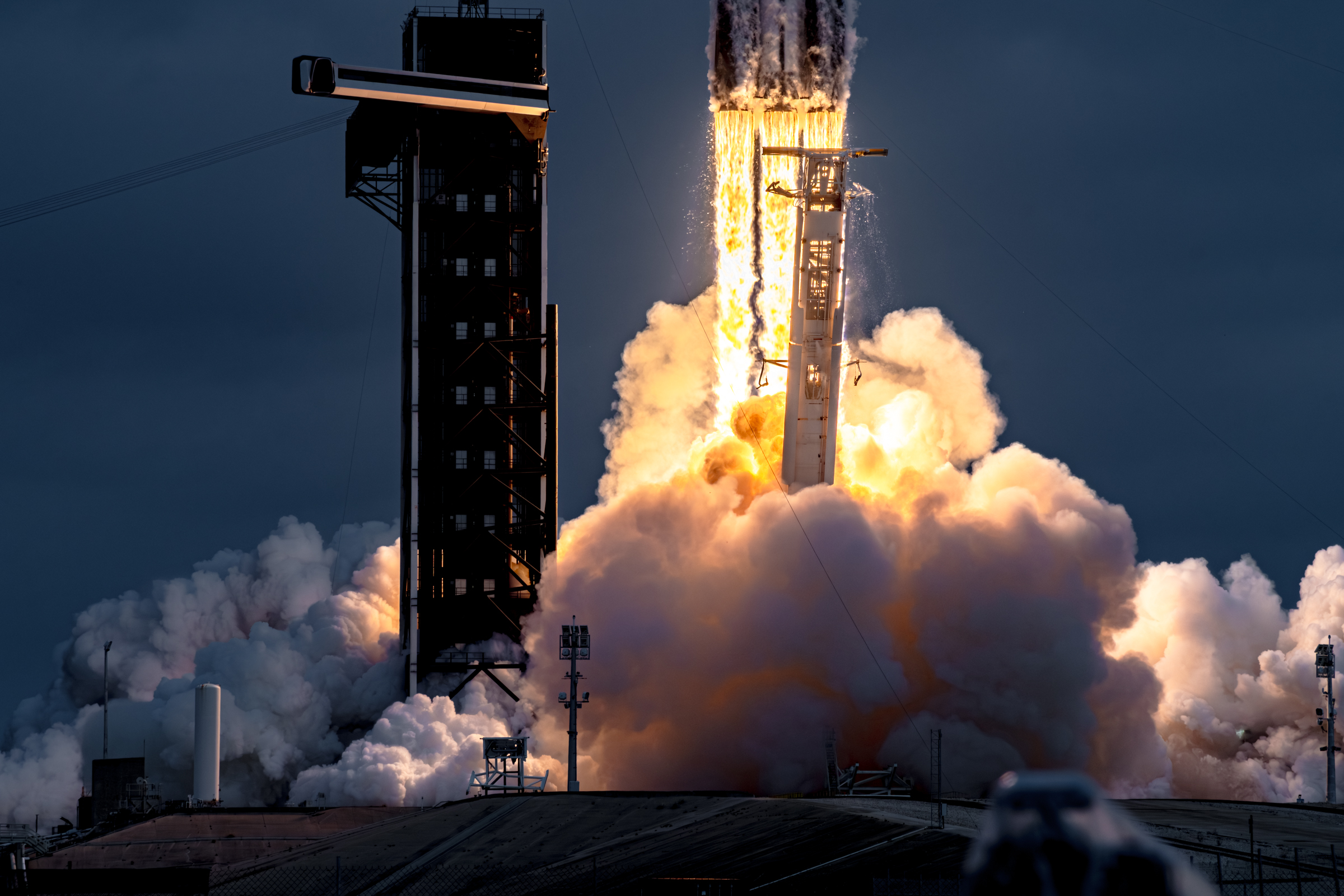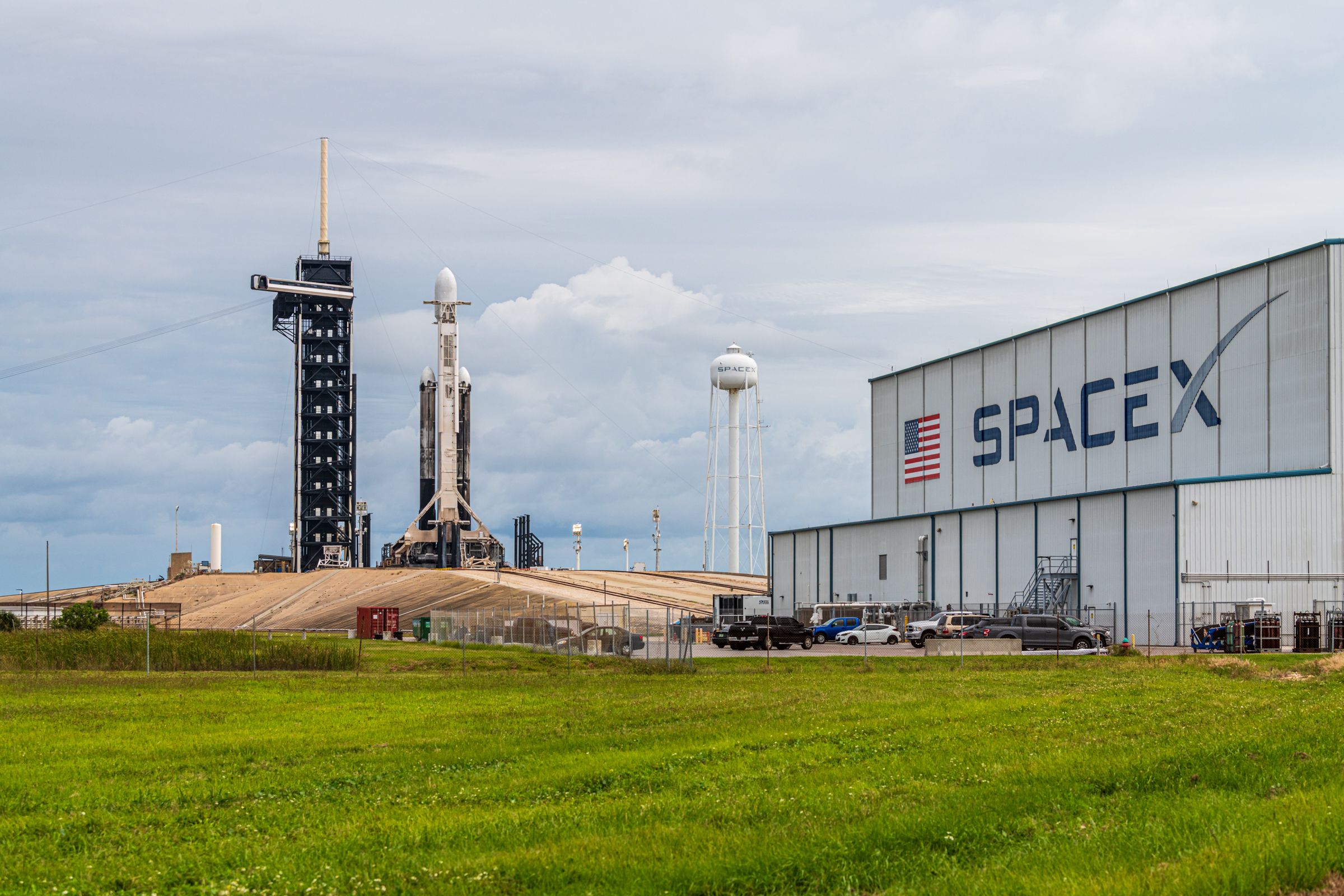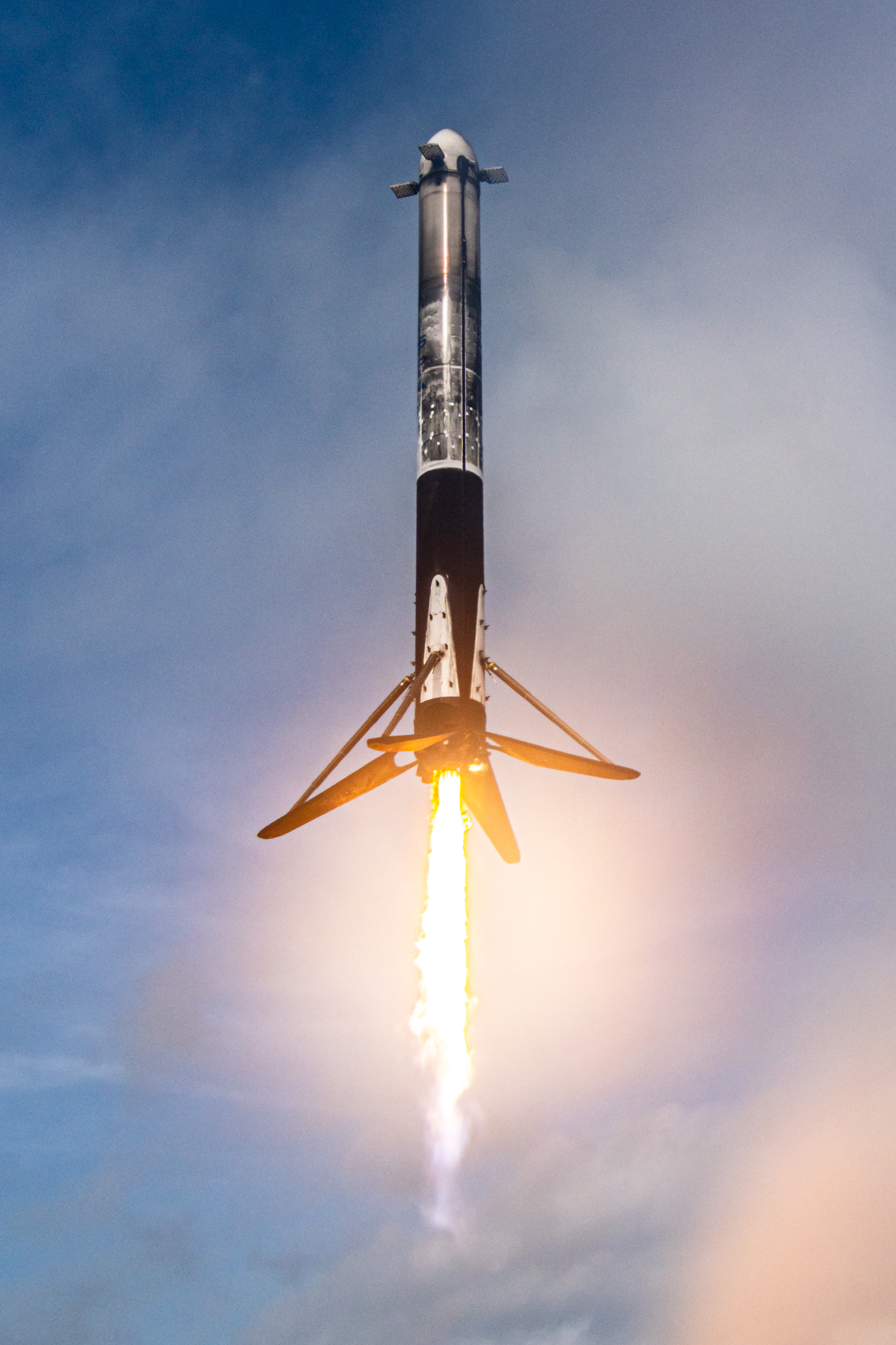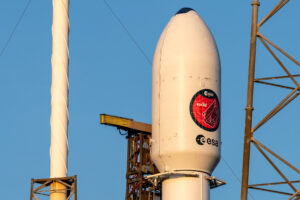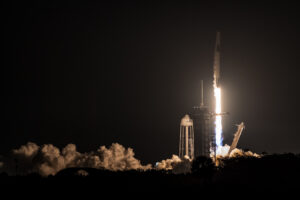Sailing the cosmic sea on a scientific voyage like no-other.
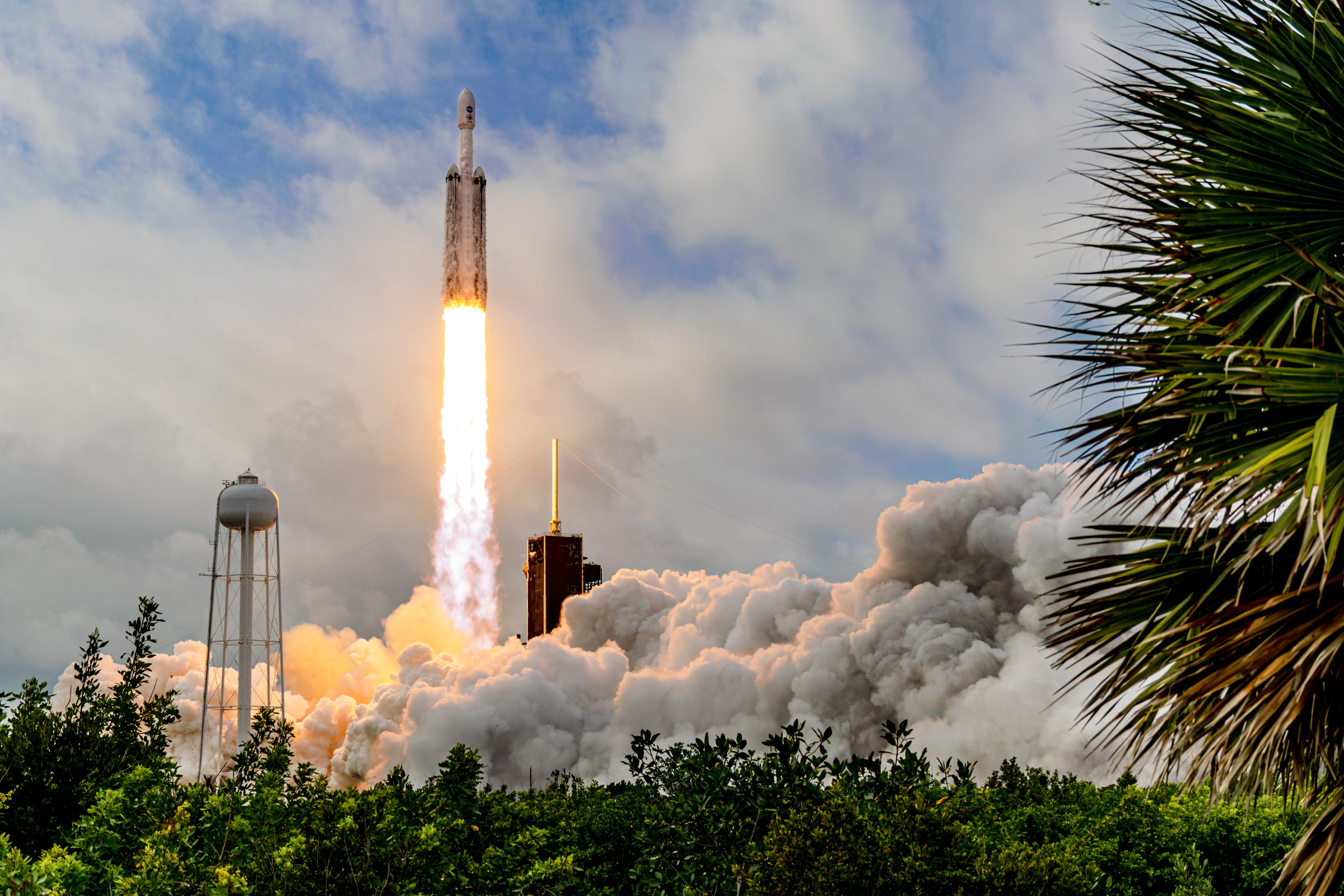
The launch of Psyche has been a welcome sight to behold. While the continuous chain of Starlink launches from Florida’s Space Coast has been remarkable to witness, and while SpaceX has achieved many milestones doing so, it’s the interplanetary missions interspersed among human spaceflight missions that not only stand out but also proudly uphold NASA’s pillars of discovery and science.
The journey to launch Psyche has been lengthy and filled with twists and turns, but they have successfully navigated it. As of this writing on October 31, 2023, things are progressing well for the spacecraft. So far, it has traveled nearly 9 million km (5.57 million miles) from Earth.
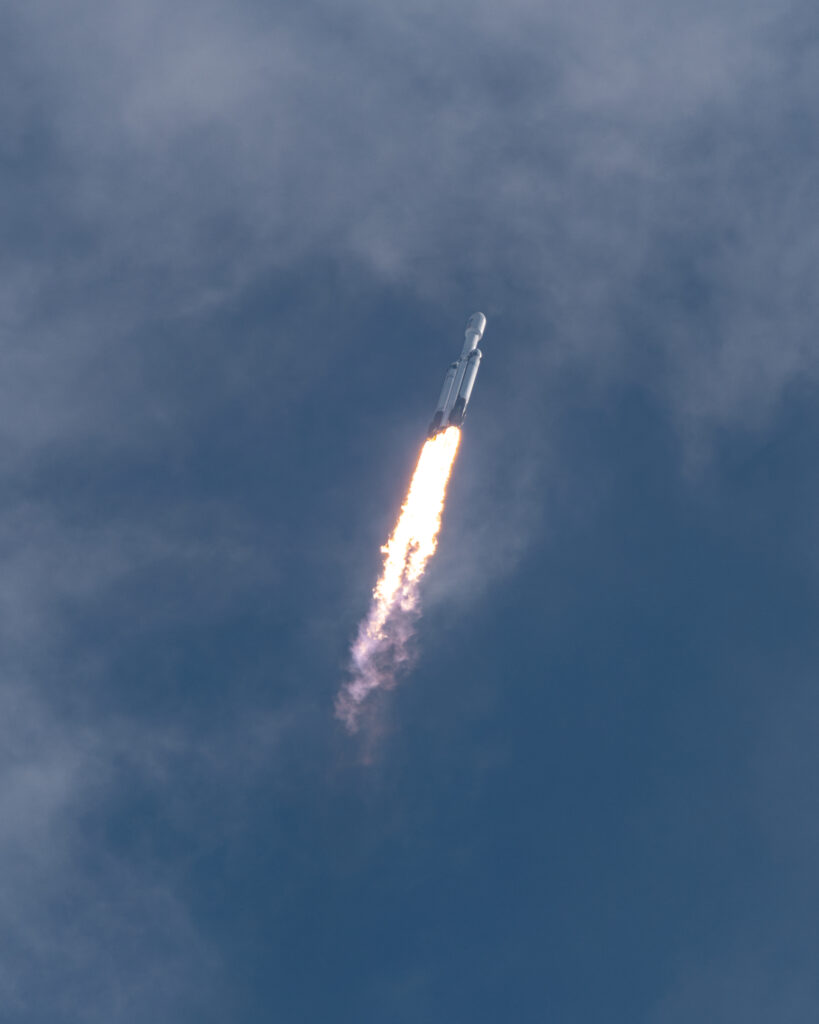
Credit: John Pisani for Cosmic Perspective
Falcon Heavy ascends away from Kennedy Space Center with the Psyche spacecraft safely inside its payload fairing.
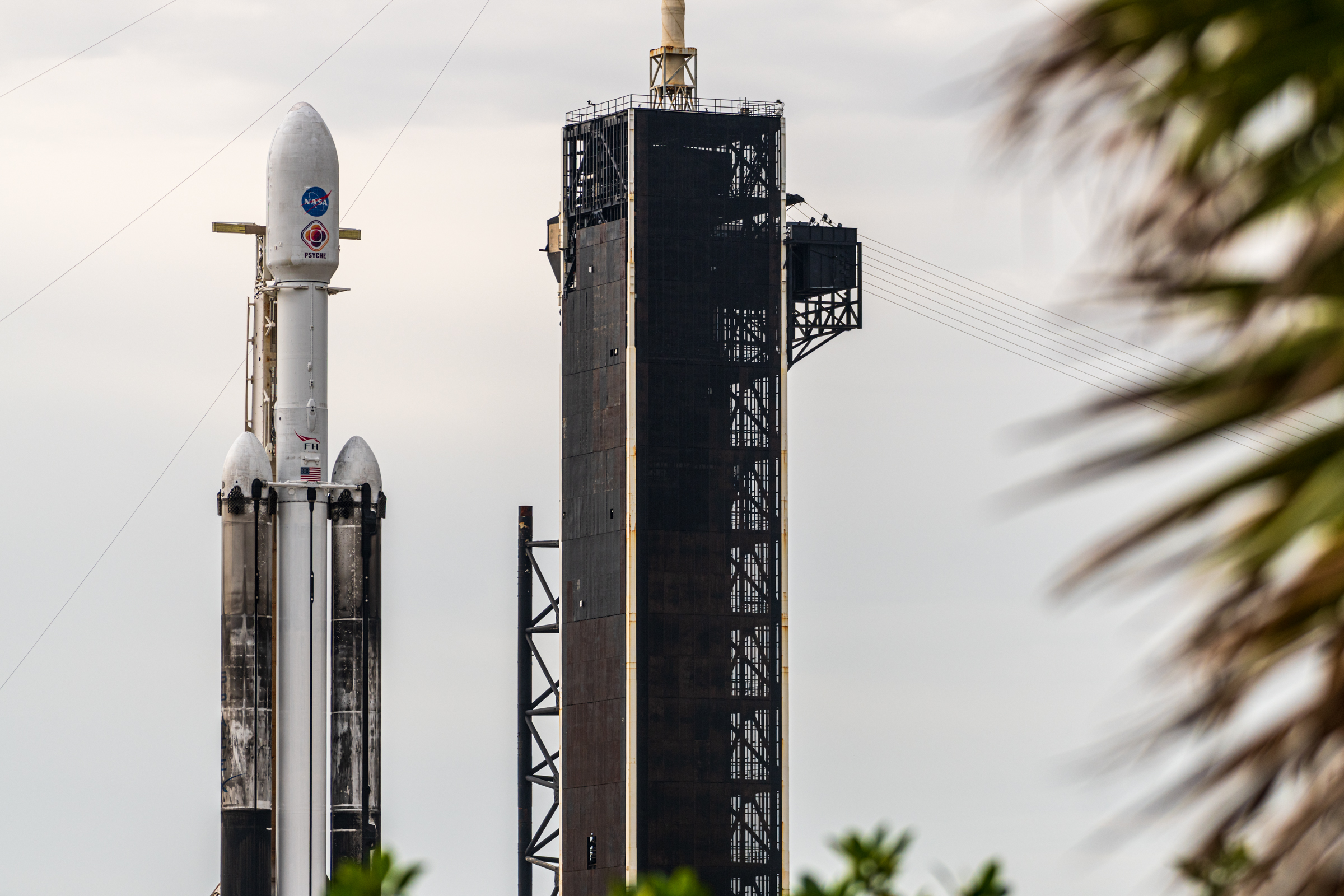
Credit: John Pisani for Cosmic Perspective
Visiting Launch Complex 39A for remote camera placement. This photo was taken at a spot along Cape Rd.
On the ground at the Kennedy Space Center, John Pisani of Cosmic Perspective documented the launch of this mission. His remote cameras were meticulously placed in various areas around Launch Complex-39A (LC-39A) and at SpaceX’s landing zone to capture the return of the Falcon Heavy side-core boosters. Despite enduring several inches of rain, a tornado-warned thunderstorm, and a 24-hour delay, they eventually woke up to capture the moment the Psyche spacecraft leapt from the Earth.
Over the course of the delayed 24 hours, the sound-activated cameras continued to snap away as rain fell, tapping on the plastic coverings that protected the cameras from getting soaked. In total, over 7,000 photos were taken by my camera on the Crawlerway. Between all three cameras, almost 15,000 photos were captured. However, in this niche of photography, I consider myself lucky to even walk away with a single shot.
It is with great pleasure and appreciation to have an opportunity to cover these missions. With each passing one, incredible milestones in human history are achieved. Amazing things are happening at spaceports around the world. And here in Florida, I call them the Space Coast Chronicles.
